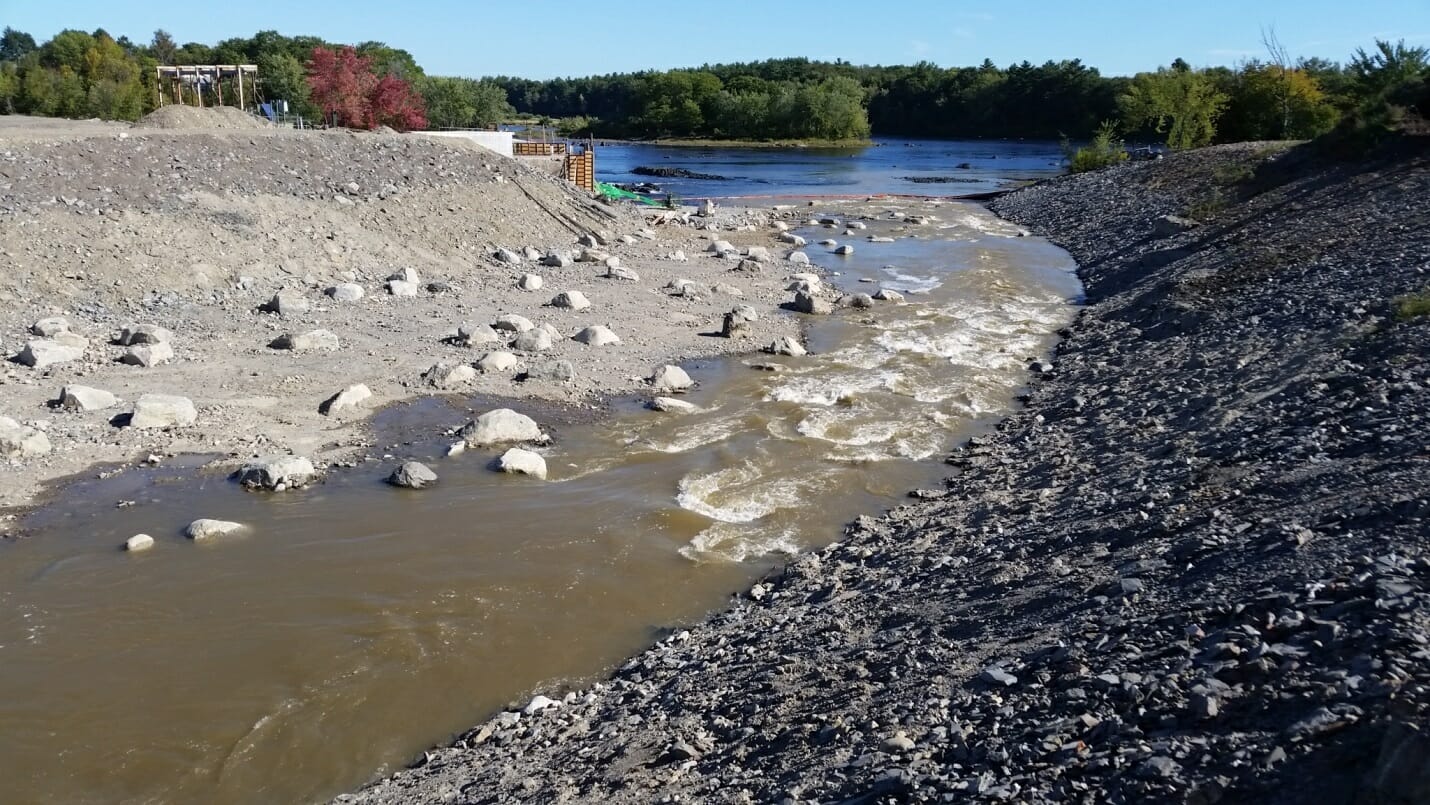Water began flowing through the Howland Dam bypass on Sept. 28
The massive, ambitious Penobscot River restoration effort reached another important milestone on Sept. 28, as the first trickles of the Piscataquis River were diverted into the new Howland Dam bypass.
Initial testing of the system is continuing, with the ultimate goal to ensure the bypass is fully operational in time for spring migrations of important species including Atlantic salmon, American shad and alewives.
The Howland Dam bypass is the latest step in an effort that will significantly improve access to nearly 1,000 miles of habitat used by 11 different species of sea-run fish, including endangered wild Atlantic salmon.
Other major steps have included the 2013 removal of the Veazie Dam on the Penobscot River, at the head of tide, and the removal of the Great Works dam on the Penobscot in 2012. At the Milford Dam, a new fish lift was constructed by the dam owner.
The efforts to improve fish populations — and to make fishing better — are paying off.
This spring at the Milford fish lift (see this video) nearly 590,000 river herring were counted, more than tripling the number seen the previous year and 45 times more than counted in 2013.
More than 1,800 American shad were also counted this spring, whereas only 20 total shad were counted in the previous 30 years combined.
Even numbers of the imperiled Atlantic salmon are moving in the right direction.
The 726 salmon counted this year represented a nearly threefold increase in the historic low counted in 2014 and give reason for optimism for continued recovery.
The new bypass at Howland Dam will allow salmon and shad to access critically important habitat in the Piscatiquis watershed, including many smaller headwaters tributaries that serve as spawning and nursery grounds.
Contractor SumCo Eco-Contracting has been gradually increasing flows through the channel this week to test the design and construction before finalizing construction activities.
The Penobscot River restoration project has brought together many collaborators and supporters, headed by the Penobscot River Restoration Trust comprising the Penobscot Indian Nation, Trout Unlimited, the Atlantic Salmon Federation, The Nature Conservancy, American Rivers, Natural Resources Council of Maine, and Maine Audubon.



